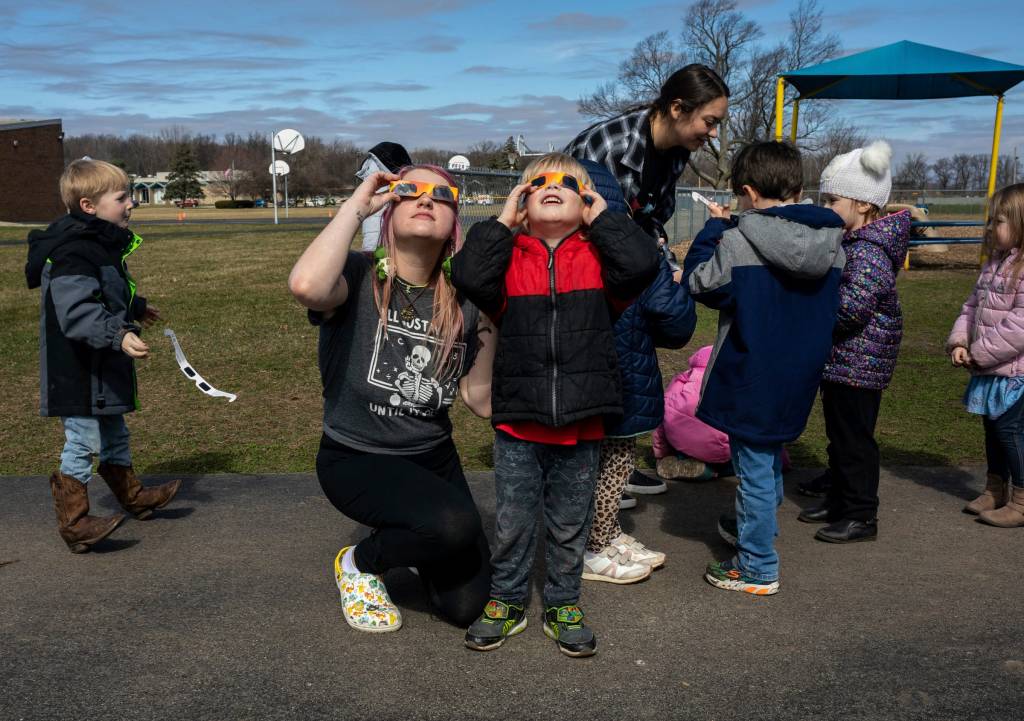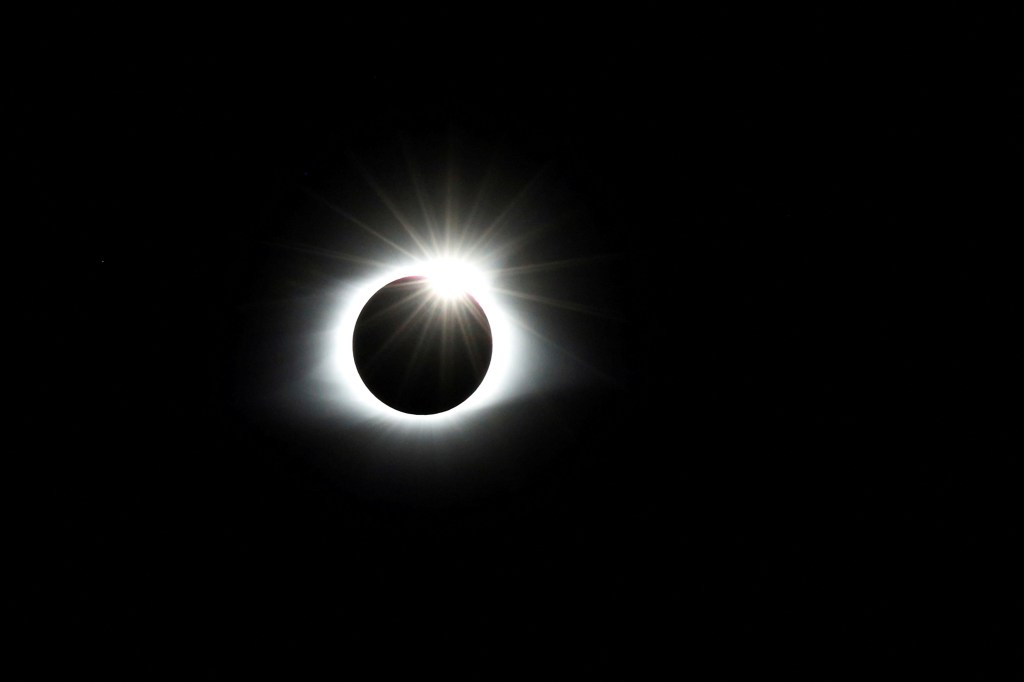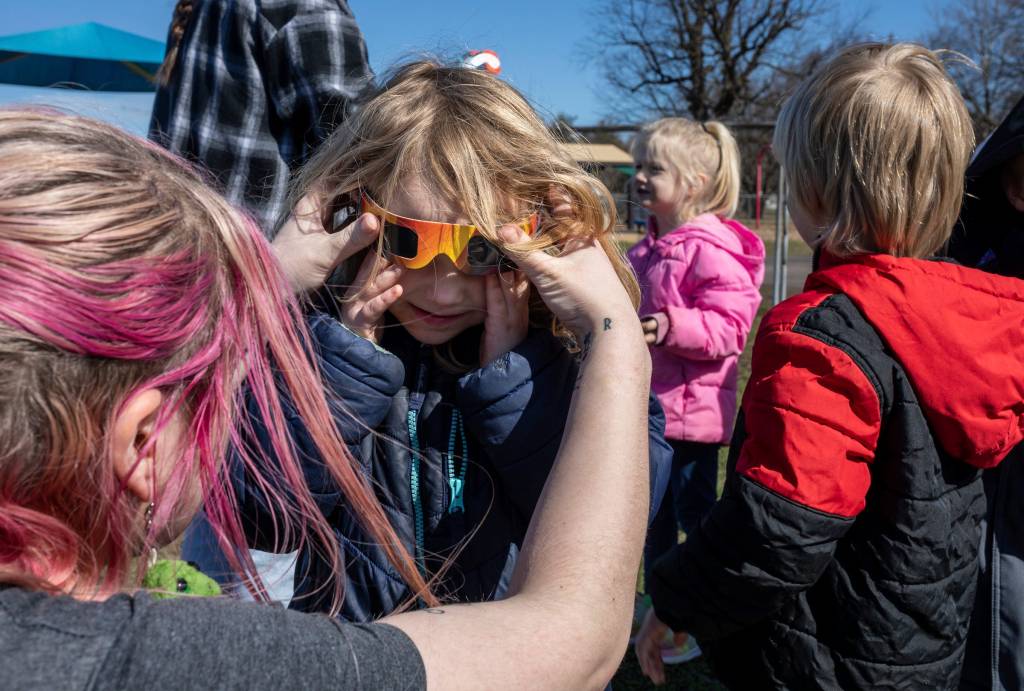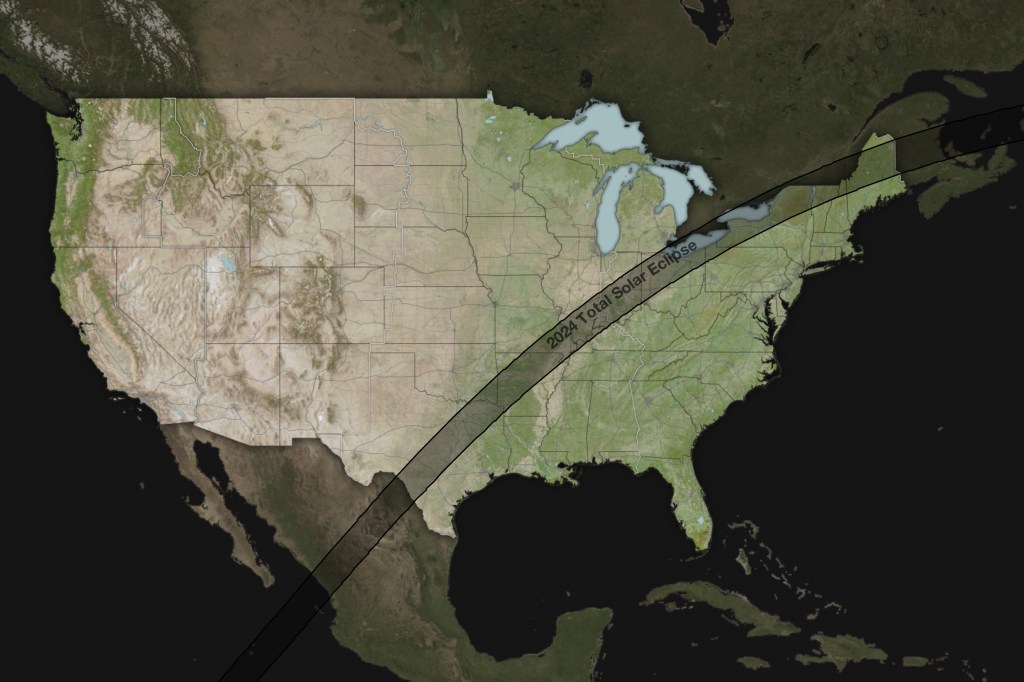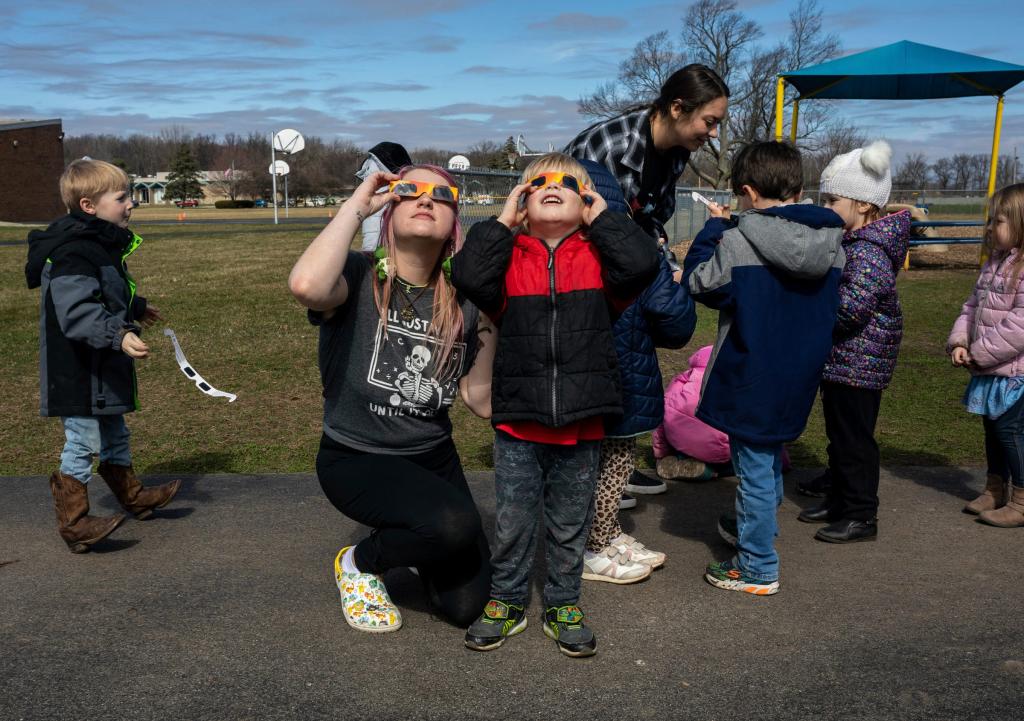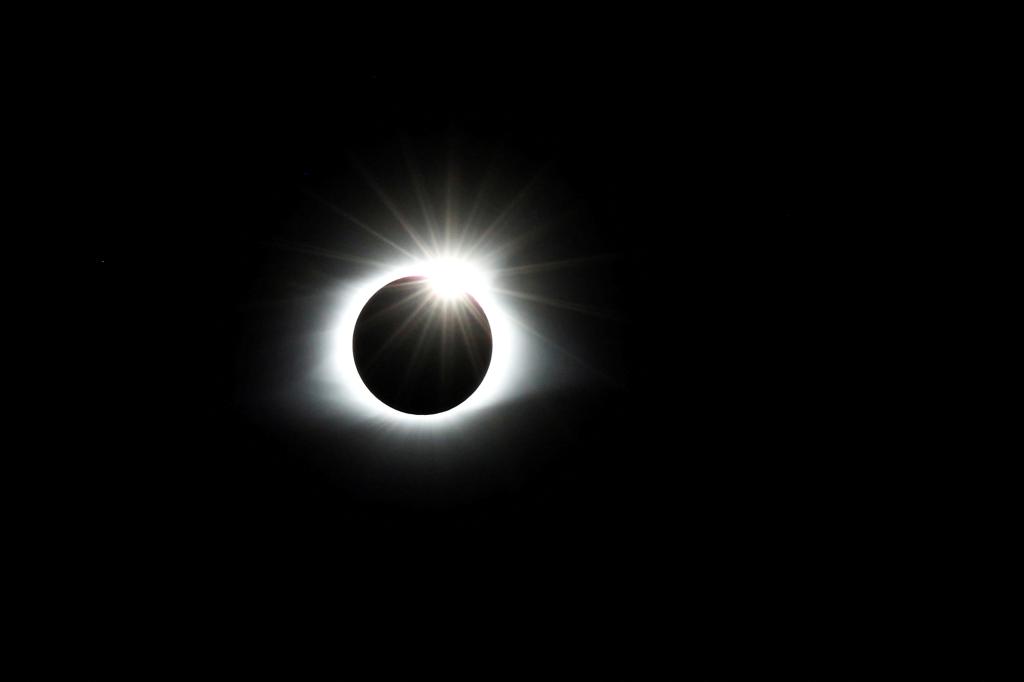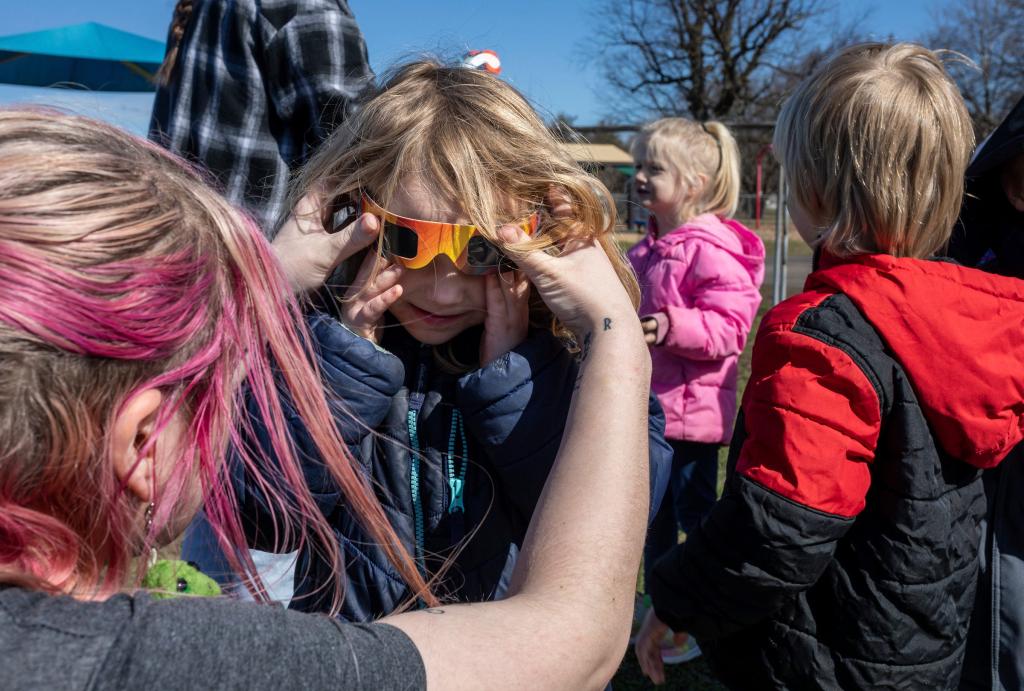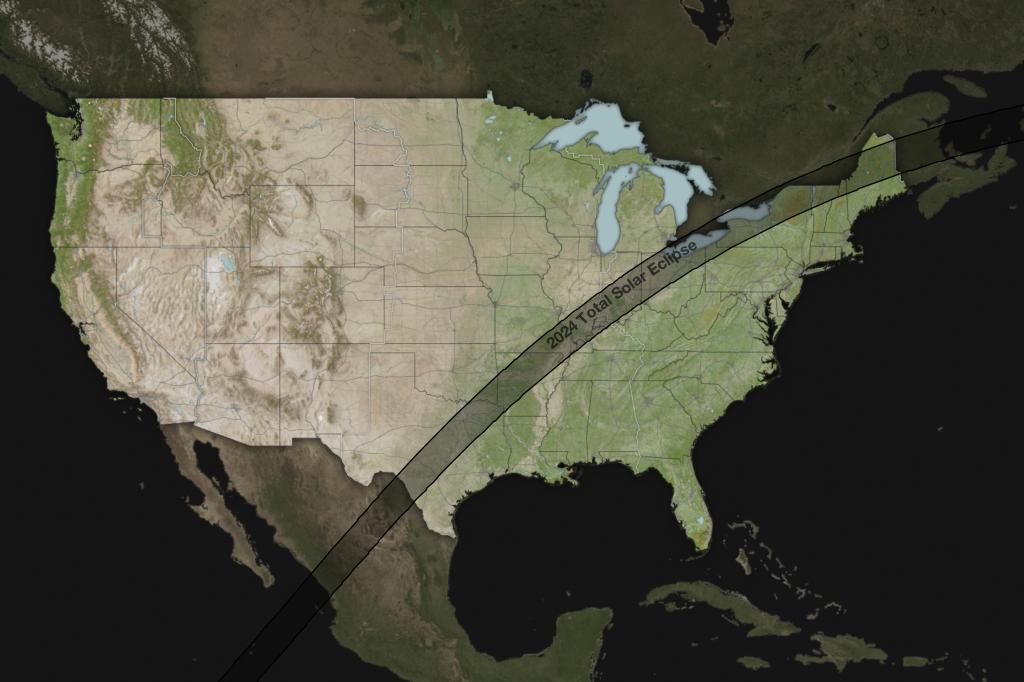Hundreds of schools in path of total solar eclipse cancel classes over safety concerns
The kids will be over the moon.
Hundreds of school districts from Maine to Texas that will experience near-total darkness during next month’s total solar eclipse will shut down or end classes early out of an abundance of caution.
The move is an effort to keep students safe, both protecting their eyes from harmful solar radiation and ensuring they safely arrive home as thousands of out-of-towners crowd small-town streets to catch an optimal glimpse of the rare cosmic phenomenon.
On April 8, the moon will pass between the sun and the Earth, briefly blocking out some or all of its light in one of the most stunning celestial events known to mankind.
Most of the US will be able to see a less-thrilling — but still very neat — partial eclipse.
But residents within a narrow 115-mile-wide band of the country, including 14 states, will be in a zone known as the path of totality, where broad daylight will be completely engulfed by darkness in a total solar eclipse, lasting for around four minutes.
Stargazers beware: NASA warns watching the sun as it’s slowly obscured by the moon’s shadow without specialized eye protection designed for solar viewing can cause serious eye injury.
With the start of the totality set to hit around the time school lets out across the US, many districts are giving kids the day off to be on the safe side.
Meghan Piper, public information officer for Liverpool School District in central New York, told NewsChannel 9 that the district would be closed on April 8, following discussions with local emergency management offices.
The district had originally planned to hold half a day of classes, but became concerned about getting kids safely to and from school in light of increased vehicular traffic as throngs of eclipse-gawkers descend on the area, she told the outlet.
Everything to know about the 2024 solar eclipse
- The solar eclipse will take place Monday, April 8, blocking the sun for over 180 million people in its path.
- The eclipse will expand from Mexico’s Pacific Coast across North America, hitting 15 US states and pulling itself all the way to the coast of Newfoundland, Canada.
- New Yorkers will experience the solar eclipse just after 2 p.m. Monday.
- A huge explosion on the sun, known as a coronal mass ejection, is anticipated, according to experts. This happens when massive particles from the sun are hurled out into space, explains Ryan French of the National Solar Observatory in Boulder, Colorado.
- To avoid serious injury to the eyes, it is necessary to view the event through proper eyewear like eclipse glasses, or a handheld solar viewer, during the partial eclipse phase before and after totality.
- The next total solar eclipse will take place on Aug. 12, 2026, and totality will be visible to those in Greenland, Iceland, Spain, Russia and a small slice of Portugal.
“School districts in other regions of the country that have experienced total eclipses like this have encountered those issues and the district decided to make the switch.”
With parts of central and western New York directly in the totality’s path, dozens of schools are giving kids the day off or holding early dismissals. The totality begins in Buffalo at 3:18 p.m. EDT, according to NASA.
Meanwhile, the superintendent of Livingston Public Schools in New Jersey sent a letter to parents this week alerting them it would be dismissing early that day after consulting with the district’s physician.
With the eclipse expected in Livingston right around the time the 3 o’clock school bell rings, some parents and staff had expressed concerns excited students might damage their eyes trying to sneak a peek.
“Our physician added that the glare and distraction caused by the solar eclipse could also present a challenge with driving during this time, which might negatively impact the safety of our parents, staff, and bus drivers,” the letter read in part.
More than a dozen school districts within the totality zone in Central Texas have announced they will be calling off classes on April 8, with Manor Independent School District declaring it a student holiday on its website, KVUE reported.
“The decision came after consulting with local city organizations, Travis County Emergency Management, and the Manor Police Department and assessing the predicted extreme traffic conditions during the afternoon and evening of the eclipse,” the statement read in part.
Parts of the Austin metro area will go dark as the eclipse reaches totality around 1:36 p.m. local time.
In Central Indiana, a number of districts are shifting schedules, either canceling classes altogether or holding e-learning days instead.
One school that will be in session that day, University High School in Carmel, is using the occasion to teach students about the cosmos, hosting an eclipse viewing party led by science faculty, Indy Star writes.
It wasn’t the only school district to acknowledge the significance of the eclipse, with one anticipating it from the start of the school year.
Earlier this year, the superintendent of Rocky River City Schools in northeast Ohio reached out to parents to announce the district’s annual spring break would be extended by a day due to the timing of the eclipse, which will be in totality just as the school day usually ends.
Nearby Canton City Schools announced back in February on the district’s Facebook page that it would have a “calamity day” on April 8, noting that “Ohio is expecting a traffic gridlock around our dismissal times.”
The last total solar eclipse viewable in the US was Aug. 21, 2017, which NASA says was viewed by more than 215 million American adults, either live or online.
The next solar eclipse to be visible from the contiguous United States won’t be until 2044.
You can read more tips from NASA on safe eclipse viewing here.








